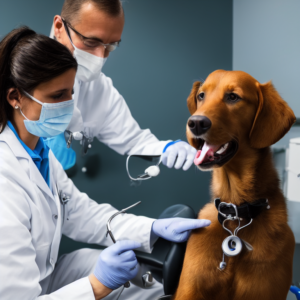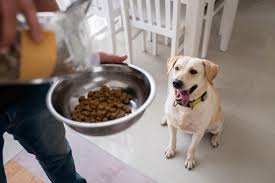Your pet is a nutritious part of your family and it is your top priority to secure their good. Although regular care such as feeding, exercise and care is necessary, it is equally important to be ready for an emergency. Accidents, sudden diseases and unexpected injuries can also occur for the most cautious pet owners. This is the place where a well -stabbed pet first aid box becomes inevitable.
Especially having available medical supplies for your pets can help you handle minor diseases or provide temporary relief until you reach the veterinarian. This blog includes why you need a pet first aid box, what to include important goods and pet tips to handle the emergency effectively.
Why Do You Need a Pet-Specific First Aid Box?
Pets’ emergencies can vary from small cuts and scrape to more serious problems such as poisoning or broken organs. Although some human primary aid supply can be adapted for pet use, many products may not be suitable or can also harm your beloved friend. A pet first aid box ensures that you have a pet -proof objects available when you need them most.
Immediate access to first aid tools:
- Helps reduce the severity of injuries.
- Prevents wounds from being infected.
- Provides temporary relief until you can reach a veterinarian.
Emergency can be stressful for both you and your pet. An organized set eliminates the need to shrink for supply and ensure you can focus on helping your animal partner.
Essential Items for Your Pet First Aid Box
Here’s a guide to what every pet first aid box should contain:
1. Basic Wound Care Supplies
- Gauze Pads and Rolls: Useful to apply pressure to clean wounds or to prevent bleeding.
- Adhesive Tape: Helps in safe straps in place without sticking to fur. A hypoallergenic alternative is ideal.
- Non-Stick Bandages:Particularly designed for pets, they protect wounds without increasing the damage.
- Antiseptic Wipes or Solutions: See stomach -proof alternatives such as cleaning of chlorhexidine and cleaning of clippings.
- Hydrogen Peroxide (3%):It is necessary to vomit in cases of poisoning, but only during veterinary guidance.
2. Tools and Equipment
- Digital Thermometer: Pets have higher body temperature than humans, and knowing that their baseline can help you fever.
- Tweezers: Work to remove spliers, ticks or other debris from your pet’s skin.
- Scissors: Round -edged medical scissors allow you to safely cut the straps or coat around the wounds.
- Tick Remover Tool: A dedicated tool ensures that the ticks are removed properly without leaving.
- Disposable Gloves: Saves both you and your pet when cleaning wounds or handling physical fluids.
3. Medication and Topical Treatments
- Veterinary-Approved Pain Relief:Do not use human painkillers as they can be toxic to pets. Contact your veterinarian for recommendations.
- Flea and Tick Treatment: Include a current treatment for instant application in case of infection.
- Antibiotic Ointment: Helps prevent infection on minor wounds.
- Eyewash Solution: Help -based eyewitnesses help dirty in pure dirt or debris with the eyes of their pets.
4. Emergency Items
- Muzzle or Soft Wrap: Even the most humble pet can cut when it hurts. A soft muzzle can help prevent damage and allow you to work safer on your pets.
- Emergency Blanket:It is useful to keep your pet warm in cases of shock or excessive cold.
- Pet CPR Guide: Knowing how to perform CPR on a pet can be a life -saving. Place a printed guide in your kit as a quick reference.
- Carry Sling or Towel: Makeshift methods to transport an injured pet safely.
5. Everyday Essentials
- Pet’s Medical Records: Include a copy of vaccination records, allergies, and any current medications.
- Contact Information: Keep your veterinarian’s number and the nearest emergency vet clinic details in the kit.
- Treats: These can serve as a distraction or reward when your pet is feeling stressed during treatment.
Tips for Using Your Pet First Aid Box
Once your pet first aid box is assembled, it’s important to know how and when to use it effectively. Follow these tips to make sure you’re prepared for any situation:
1. Learn Basic First Aid for Pets
Education about emergency aid for pet health emergencies, seizure or cut. Organizations such as the Red Cross offer practical skills PET-specific first aid courses.
2. Stay Calm
Your pet can understand your anxiety, so it’s important to remain calm. Talk to them in a soothing tone and handle them gently during an emergency.
3. Know When to Act
While a Pet First Aid Box is an excellent tool, it does not replace professional veterinary care. Use the immediate treatment set, but always consult a veterinarian for serious injuries, toxicity or time symptoms.
4. Regularly Update Your Kit
To ensure that all the goods are in good condition, notice the first aid box from time to time to ensure safety. Change expired medicines and fill the used supply. Walk or travel home? Be sure to move your kit.
5. Practice Using Equipment
A knowledge of the item in your set before the emergency occurs. When you know how to use them properly, when your pet is in crisis, you can save valuable time.
Where to Store Your Pet First Aid Box
Your Pet first aid box should easily be stored in the available location that is out of reach for children and pets. A waterproof and durable container is better, especially if you are planning to travel with it. Consider having a new, portable set for car trips or outdoor adventures.
Final Thoughts
A Pet first aid box for pets is an important investment in the pet’s health and safety. It not only prepares you for unexpected situations, but also provides the confidence to know that you are equipped to handle less emergency conditions. With a small effort to put together and maintain the kit, you can provide immediate care that can make a significant difference in your pet’s best.
Take the first step today and make a customized Pet first aid box for your beloved friend. By doing this, you will be ready to handle any accident or emergency with confidence and care.


















